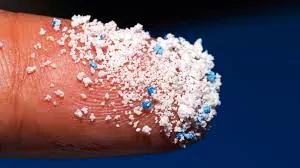![]() 22 Feb 2024
22 Feb 2024
A recent study conducted by scientists at Columbia University in New York has found that a litre of bottled water may contain over one hundred thousand particles of micro and nano plastics.


 Presence of Unmatched Particles: The study also detected particles in the sample that didn’t correspond to existing standards.
Presence of Unmatched Particles: The study also detected particles in the sample that didn’t correspond to existing standards.News Source: The Hindu
| Must Read | |
| NCERT Notes For UPSC | UPSC Daily Current Affairs |
| UPSC Blogs | UPSC Daily Editorials |
| Daily Current Affairs Quiz | Daily Main Answer Writing |
| UPSC Mains Previous Year Papers | UPSC Test Series 2024 |
<div class="new-fform">
</div>